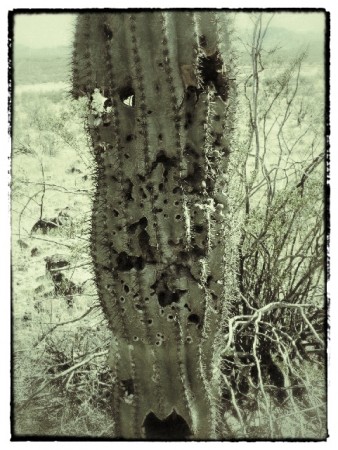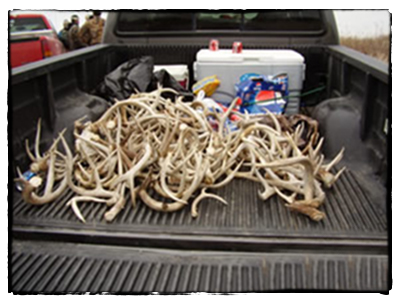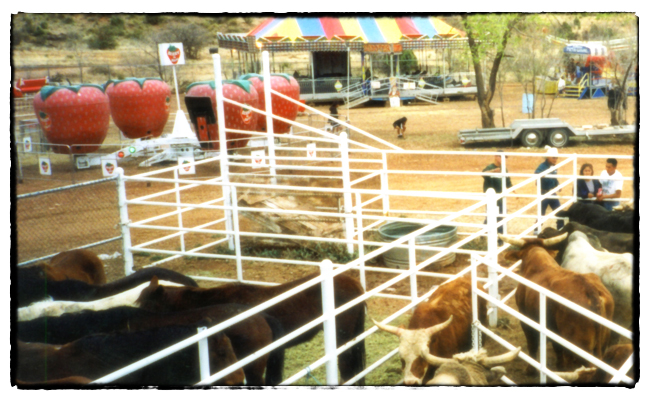When you look at an old saguaro that is maybe 50 feet tall, you can’t help but wonder how the damn thing ever survived so long. It began life as a shiny black seed no bigger than a pinhead and right from the beginning the odds of surviving to adulthood are slim. The best chance for survival comes if a seed gets blown beneath the shade of a nurse tree like a palo verde or mesquite. Saguaro seedlings that grow under these sheltering plants are shaded from the desert’s intense sunlight, blanketed from winter cold, and hidden from rodents, birds, and other animals that eat them.
But even if that happens, odds are the cactus won’t make it into its teens. Consider that by the end of its first year a saguaro seedling may measure only 1/4 inch. After 15 years, it’s lucky if it stands a foot tall. By 50 years, a cacti may stand as tall as a man but it’s not until about 75 years that it begins to sprout its first branches, or “arms.” By 100 years the saguaro may have reached 25 feet and those that make it to 150 years can grow as high as 50 feet or more and weigh over 8 tons.
Which is why it’s so devastating to see one of these ancient citizens, born perhaps before the Civil War, mutilated from vandals, their stalks riddled with holes from gunshots, their arms hacked at by machetes, their spongy flesh etched with graffiti—someone’s initials or a crude heart with the names of two young lovers inside. It breaks your heart.






Recent Comments